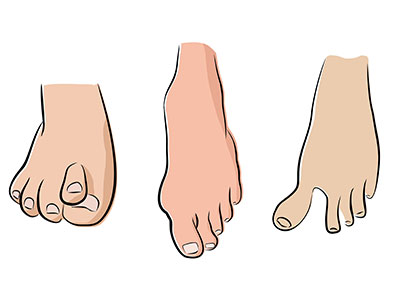


One of the most common toe deformities seen by our office is a hammertoe. Most often attributed to wearing ill-fitting, tight footwear or high-heeled shoes that squish the toes into a bent position, a hammertoe can also be influenced by genetic factors, the result of a bunion, or caused by arthritis in the toe joint.
Just as the name implies, a hammertoe resembles a “hammer” with the toe bending at the middle joint into a claw-like deformity. Hammertoes can develop in any of the small toes of the foot, but most often affect the second and third toes. Hammertoes usually affect women, but men can develop them as well.
Hammertoes can cause you discomfort while walking or when you simply try to move or stretch your toes. You may also develop corns or calluses on the top of the toe and the ball of the foot and have difficulty fitting into your shoes.
While in the early stages of a hammertoe, the joint may still be flexible and conservative therapy will provide sufficient relief, left untreated your toe will become more rigid and less responsive to these methods of care.
Our podiatrist will develop an appropriate plan to treat your hammertoe, taking into consideration the severity of the toe deformity, existing medical conditions, your level of activity as well as any other factors that may influence your care. A non-surgical, conservative approach may include strategically placed foot padding, wearing shoes with a roomy toe box, custom orthotics, splinting and taking anti-inflammatory medication as needed to reduce pain and inflammation. In severe cases, surgery may be required to straighten the joint. A combination of procedures may be recommended when a hammertoe is accompanied by other foot deformities.